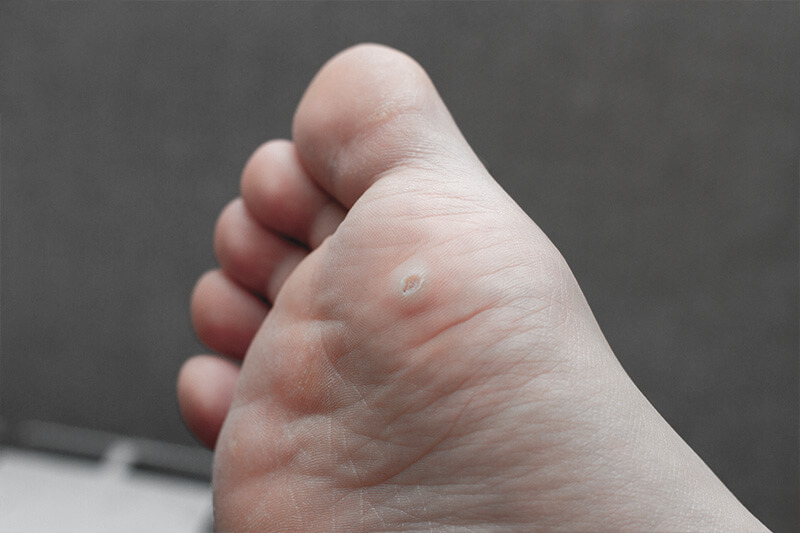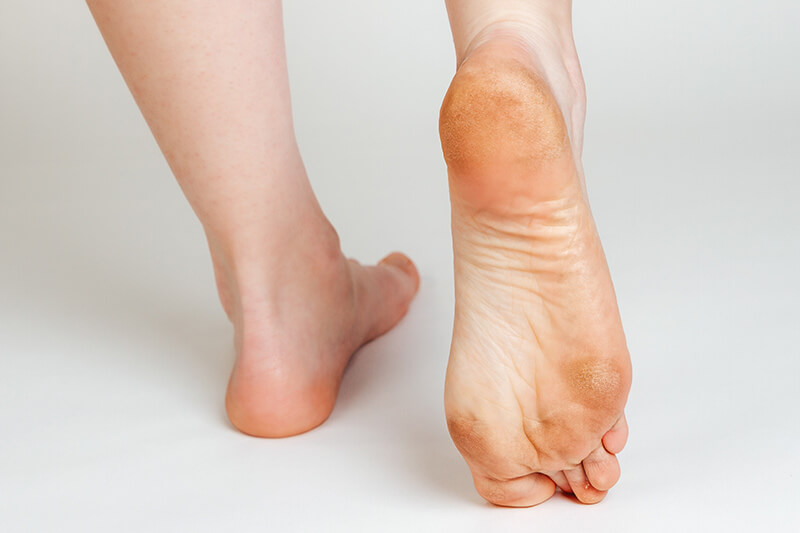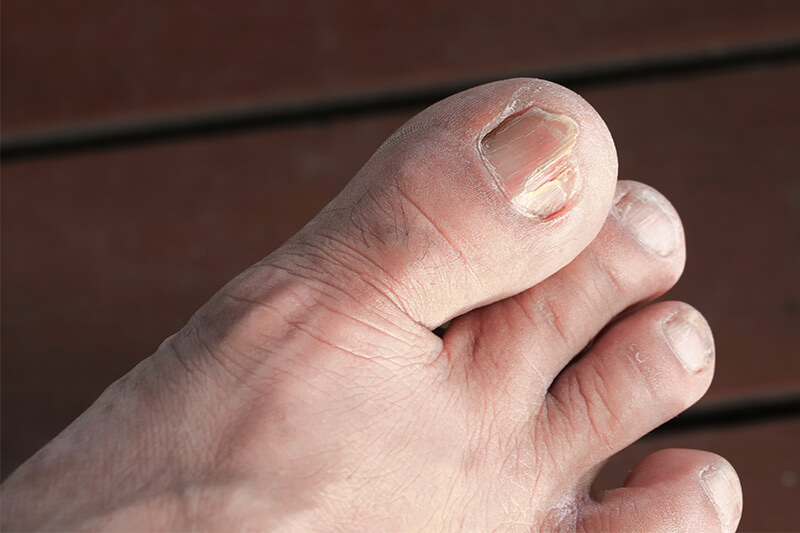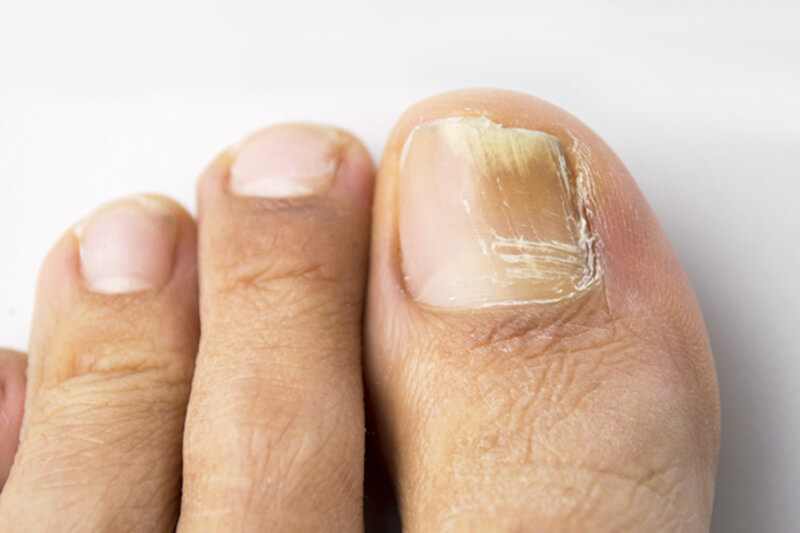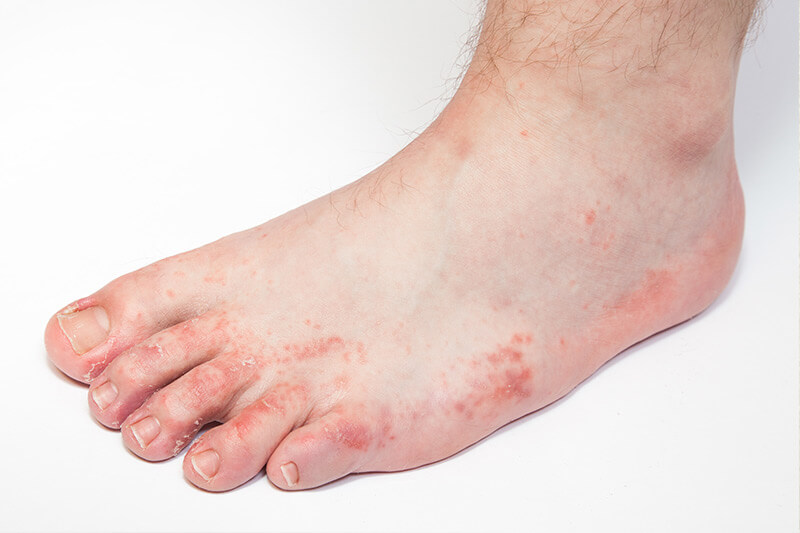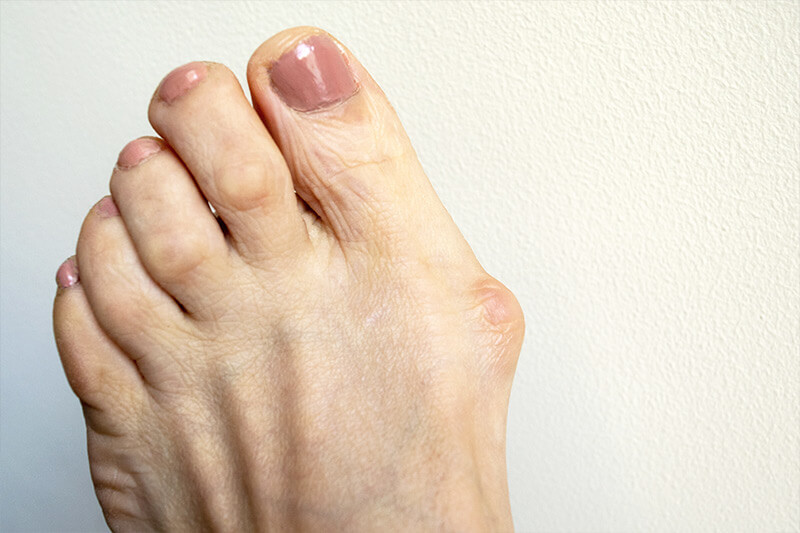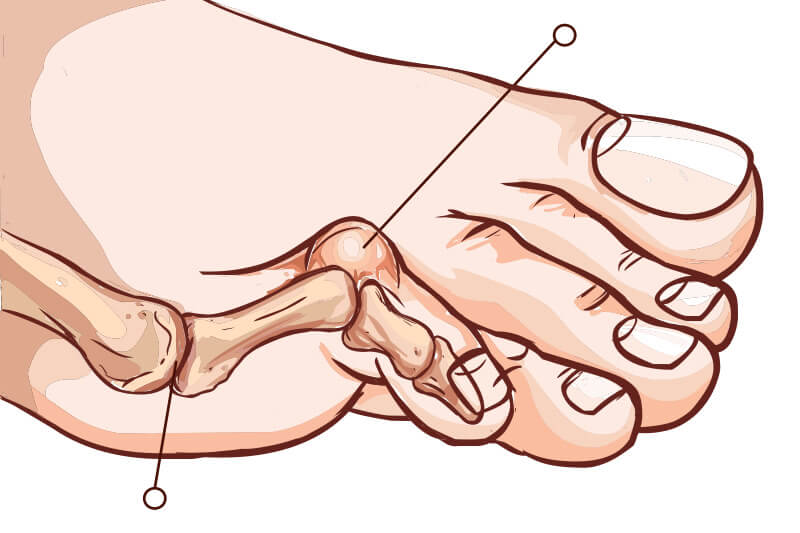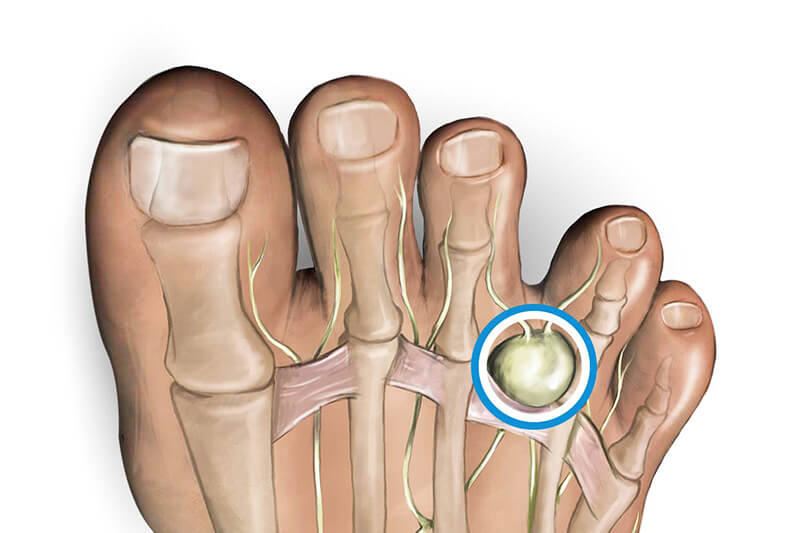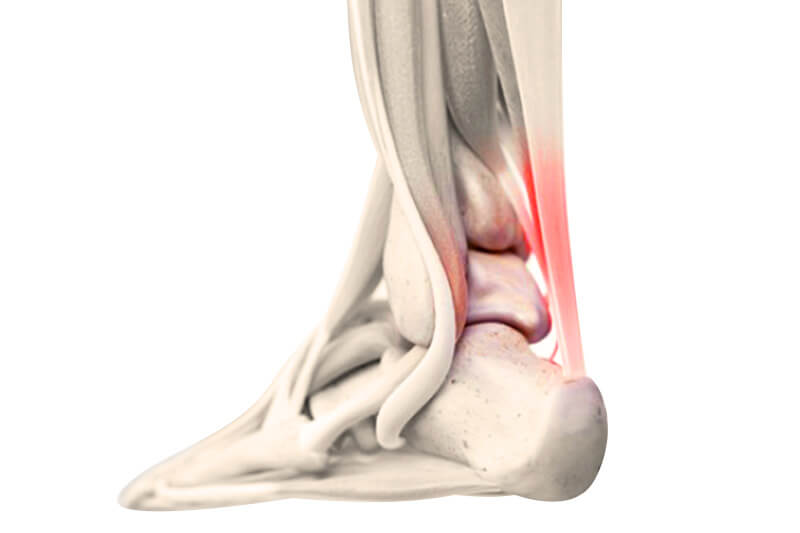PRACTICAL INFORMATION
Foot pathologies
See the most common foot pathologies below.
Plantar warts
It is a virus, (the human papilloma virus) affecting the superficial layer of the skin, the epidermis.
These lesions, called warts, can multiply and spread among the people around us because of their contagious nature. In addition, plantar warts can become painful when located below pressure points when walking or in shoes.
The treatments offered in the office are very effective and overcome the vast majority of lesions.
Corns and calluses
It is the skin’s natural response to pressure and friction. The higher the pressure and friction, the thicker the last layer of skin will be.
Calluses (or corns) are often a sign that the gait or structure of the foot is not optimal and can become painful.
A corn often feels like a small pebble in your shoes. Treatment is usually painless, and relief is immediate. However, they are likely to return.
Ingrown toenails
The term “ingrown toenails” can be used to refer to excessive curvature of a nail or poorly cut nails. This becomes painful at the slightest pressure.
An ingrown toenail can even become infected and resistant to antibiotic treatment. Definitive treatment is a simple minor surgery that consists of removing a small portion of the nail, the one in conflict with the skin, under local anesthesia.
This treatment is permanent and extremely effective.
Fungus
Thickened and discolored nails are often more of an aesthetic problem than a painful one, although in some circumstances there may cause discomfort.
Parasitic fungi are almost always pointed at and yet, in half of the cases and to the surprise of many, are not responsible.
Indeed, a small, painless swab is sometimes necessary in order to arrive at the correct diagnosis and thus avoid long, expensive and frustrating treatments. These same treatments often prove to be ineffective.
Potential causes of nail discoloration could be caused by continuous pressure and friction, the after-effects of a direct blow to the nail, skin problems such as eczema, psoriasis and lichen planus, as well as the presence of fungus.
Athlete's foot
This term indicates a fungal infection of the skin. Fungus prefers moist, warm, dark areas such as between the toes, although any area of the foot may be involved. It is the reason why we find this type of contagious infection more often in people who sweat from their feet. Athlete’s foot sometimes leaves reddish, peeling skin and severe itching that can be associated with it.
Treatment consists of applying an antifungal cream and reducing sweating.
Bunions (hallux valgus)
Bunions are the result of faulty foot biomechanics. It is the deviation of the bones of the big toe, which forms a bony prominence on the side of the foot. They can be hereditary, but the flexibility and structure of the foot are the most important factors in the development of hallux valgus. People of all ages can have this deformity and it can become very painful as it progresses over time. Wrong footwear speeds the progression of this problem.
Orthotics and good shoes stabilize the foot, slow the progression of the bunion and reduce pain. Bone surgery, on the other hand, is the only way to “remove the bump”.
Hammer Toes
Hammer toe is a deformity of the toes caused by contractions and imbalance of the muscles and tendons of the foot and leg that do not function properly. All toes can be affected, individually or in groups. Toe contraction is often the cause of painful corns between and on the toes.
Like the bunion, the definitive treatment of the hammer toe is surgery to put the toe back straight or remove the pressure point. However, gel accessories, good footwear and orthotics for flexible deformities are essential to relieve pain and to slow the progression of these deformities.
Plantar fasciitis and heel spur
Plantar fasciitis is a local condition of the foot that consists of irritation caused by micro tears of the ligament under the foot called plantar fascia. This problem can cause pain in the heel and arch of the foot, especially during the first few steps in the morning and at the end of the day or after more intense activities.
A heel spur is the presence of a bone growth at the insertion of the fascia visible on x-rays. It can be painful and is associated with plantar fasciitis.
The various treatments and advice to reduce pain include wearing good shoes, temporary cessation of sports activities, ice, anti-inflammatory drugs, stretching, heel pads, foot orthotics, manual therapy and cortisone injections.
Morton's neuroma (or neuromas)
A neuroma is a benign mass composed of fibrosis that develops in the nerve. The most common neuroma in the foot is Morton’s neuroma, which affects the nerve between the third and fourth toe. It is frequently seen in women wearing high-heeled, pointed shoes and in athletes with hypermobile feet. The neuroma causes symptoms such as numbness of the toes, a sensation of electric shock or cramps, the sensation of a bump under the front of the foot and burning when walking.
The podiatrist will be able to diagnose this condition with a clinical examination based on symptoms, palpation and diagnostic ultrasound evaluation. Conservative treatments include advice on proper footwear, anti-inflammatory medication, modifications to insoles and treatment with foot orthotics. Cortisone infiltration leads to a decrease in pain, reducing symptoms temporarily or permanently in some cases. Sometimes, when the neuroma is larger and no conservative treatment relieves the patient, surgery must be considered.
Achilles tendinopathy
The Achilles tendon is a tendon that connects the muscles from the calf to the heel. Achilles tendonitis is caused when this tendon is inflamed or damaged when it is inserted in the heel. It is most often found in adult men. Overexertion, jumping, mountain walking, running, sports with sudden stops and starts and a tense Achilles tendon are all factors that can cause Achilles tendonitis. Pain and stiffness are felt behind the heel when walking.
In order to increase the flexibility of the tendon, stretching exercises should be done at home. In addition, temporary discontinuation of sports, ice and NSAIDs may be recommended. A heel-lift can also help to reduce tension on the Achilles tendon.
For the health of your feet and a better quality of life
THE FLAT FOOT
As the name implies, a flat foot is a foot that has no arch when standing. A pronating foot or hyperpronation are often synonymous with flat feet. These are often hereditary. When you look at the foot from behind, you can often see the heel tilting inward.
Flat feet can be the cause of many foot, knee, hip and back pains because of lower limb misalignment and faulty biomechanics affecting general posture. The podiatrist can perform a complete biomechanical examination, diagnose the pathology and offer treatment by prescribing a custom-made plantar orthosis that will support the feet and adequately realign the lower limb.
THE NORMAL FOOT
A “Normal” foot is one in which the medial arch is neither pronounced upwards nor downwards when standing. This foot may still cause symptoms that are not related to the arch of the foot. Depending on each case, the podiatrist may choose a treatment plan that is necessary.
THE CAVUS FOOT
In contrast to the flat foot, the cavus foot has very pronounced plantar arch under load (standing). The causes can be hereditary or originate from neuromuscular disease. Cavus feet lead to faulty biomechanics, unsteadiness when walking and reduced shock absorption. Muscle tension is often observed in the outer legs and knees as well as in the lumbar region. Inversion sprains are also often observed in athletes with this type of foot. Plantar orthotics support cavus feet, reduce tension, distribute pressure and prevent associated injuries.

